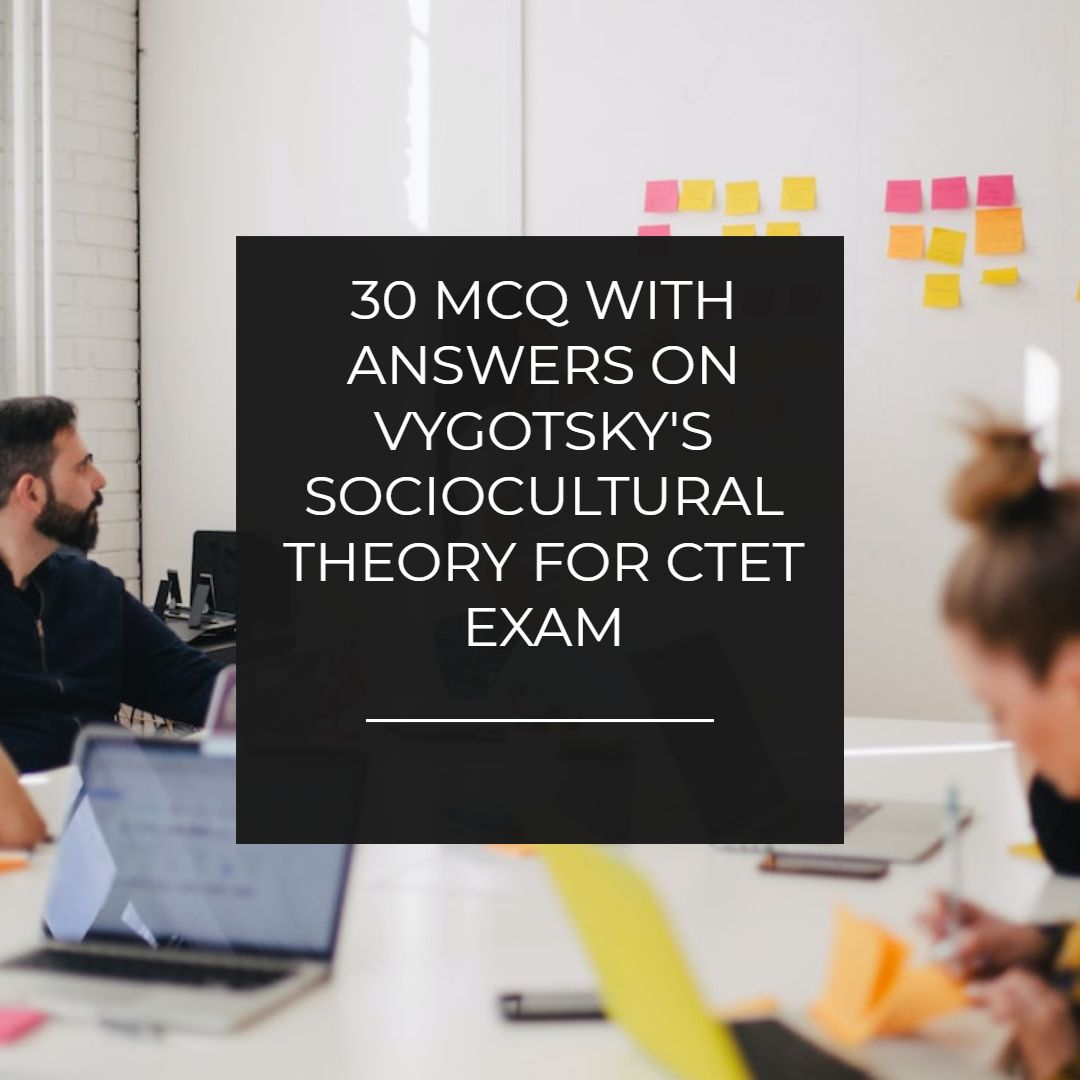20 MCQ with answers on Understanding individual differences in learning styles and abilities
20 MCQ with answers on Understanding individual differences in learning styles and abilities for ctet exam
Certainly! Here are 20 multiple-choice questions with answers on understanding individual differences in learning styles and abilities for the CTET (Central Teacher Eligibility Test) exam:
-
What is the term used to describe the unique characteristics and abilities that individuals possess?
a) Individual differences
b) Learning styles
c) Intelligence quotient
d) Cultural diversity
Answer: a) Individual differences -
Learning styles refer to:
a) The preferred way individuals process and comprehend information
b) The intelligence level of individuals
c) The cultural background of individuals
d) The physical abilities of individuals
Answer: a) The preferred way individuals process and comprehend information -
Which of the following is NOT a commonly recognized learning style?
a) Visual
b) Auditory
c) Kinesthetic
d) Logical
Answer: d) Logical -
A student who learns best by listening to lectures and discussions is likely to have a preference for which learning style?
a) Visual
b) Auditory
c) Kinesthetic
d) Reading/Writing
Answer: b) Auditory -
Which of the following is an example of a visual learning strategy?
a) Taking notes during a lecture
b) Discussing concepts in a group
c) Engaging in hands-on activities
d) Creating diagrams and mind maps
Answer: d) Creating diagrams and mind maps -
A student who learns best by engaging in hands-on activities and manipulating objects is likely to have a preference for which learning style?
a) Visual
b) Auditory
c) Kinesthetic
d) Reading/Writing
Answer: c) Kinesthetic -
Which of the following is an example of a kinesthetic learning strategy?
a) Listening to recorded lectures
b) Reading and highlighting important information
c) Participating in experiments and role-plays
d) Engaging in group discussions
Answer: c) Participating in experiments and role-plays -
Multiple intelligences theory suggests that individuals have different types of intelligence. How many types of intelligences are proposed by Howard Gardner?
a) 2
b) 5
c) 7
d) 9
Answer: c) 7 -
According to Howard Gardner’s multiple intelligences theory, which intelligence is related to understanding oneself and others?
a) Logical-Mathematical intelligence
b) Verbal-Linguistic intelligence
c) Intrapersonal intelligence
d) Interpersonal intelligence
Answer: d) Interpersonal intelligence -
A student who excels in logical reasoning and problem-solving is likely to have a high preference for which intelligence?
a) Logical-Mathematical intelligence
b) Verbal-Linguistic intelligence
c) Bodily-Kinesthetic intelligence
d) Musical intelligence
Answer: a) Logical-Mathematical intelligence -
Which of the following is an example of an interpersonal learning strategy?
a) Working independently on a task
b) Engaging in group discussions and collaborative activities
c) Creating artwork and visual representations
d) Reading and writing about a topic
Answer: b) Engaging in group discussions and collaborative activities -
Inclusive teaching practices take into consideration:
a) The learning style preferences of all students
b) The intelligence level of all students
c) The cultural background of all students
d) The physical abilities of all students
Answer: a) The learning style preferences of all students -
Different
iated instruction refers to:
a) Adapting teaching methods to meet the individual needs of students
b) Providing the same instruction to all students
c) Focusing solely on the academic abilities of students
d) Ignoring individual differences in the classroom
Answer: a) Adapting teaching methods to meet the individual needs of students
-
Which of the following is an example of differentiated instruction?
a) Teaching the same content using the same approach for all students
b) Modifying instructional materials to accommodate different learning styles
c) Focusing only on the most advanced students in the class
d) Assigning the same homework to all students
Answer: b) Modifying instructional materials to accommodate different learning styles -
Universal Design for Learning (UDL) aims to:
a) Provide the same learning opportunities for all students
b) Exclude students with different learning styles and abilities
c) Focus only on academic achievements
d) Promote inclusive education for students with disabilities
Answer: a) Provide the same learning opportunities for all students -
Individualized Education Program (IEP) is a plan designed for students with:
a) Different learning styles
b) Different cultural backgrounds
c) Physical disabilities
d) Special educational needs
Answer: d) Special educational needs -
Assistive technology can be helpful for students with:
a) Advanced learning abilities
b) Visual impairments
c) Homogeneous learning styles
d) Similar cultural backgrounds
Answer: b) Visual impairments -
The Zone of Proximal Development (ZPD) refers to:
a) The physical development of students
b) The social development of students
c) The cognitive development of students
d) The difference between what a learner can do with and without assistance
Answer: d) The difference between what a learner can do with and without assistance -
An individualized learning plan that outlines specific goals and strategies for a student is called:
a) Individualized Education Program (IEP)
b) Multiple Intelligences Assessment
c) Culturally Responsive Teaching Plan
d) Universal Design for Learning (UDL)
Answer: a) Individualized Education Program (IEP) -
Differentiation in the classroom refers to:
a) Teaching the same content in the same way for all students
b) Providing extra support only to students with learning difficulties
c) Adapting instruction to meet the diverse needs of students
d) Assigning the same tasks and assessments to all students
Answer: c) Adapting instruction to meet the diverse needs of students
I hope these MCQs assist you in your CTET exam preparation! Best of luck!



